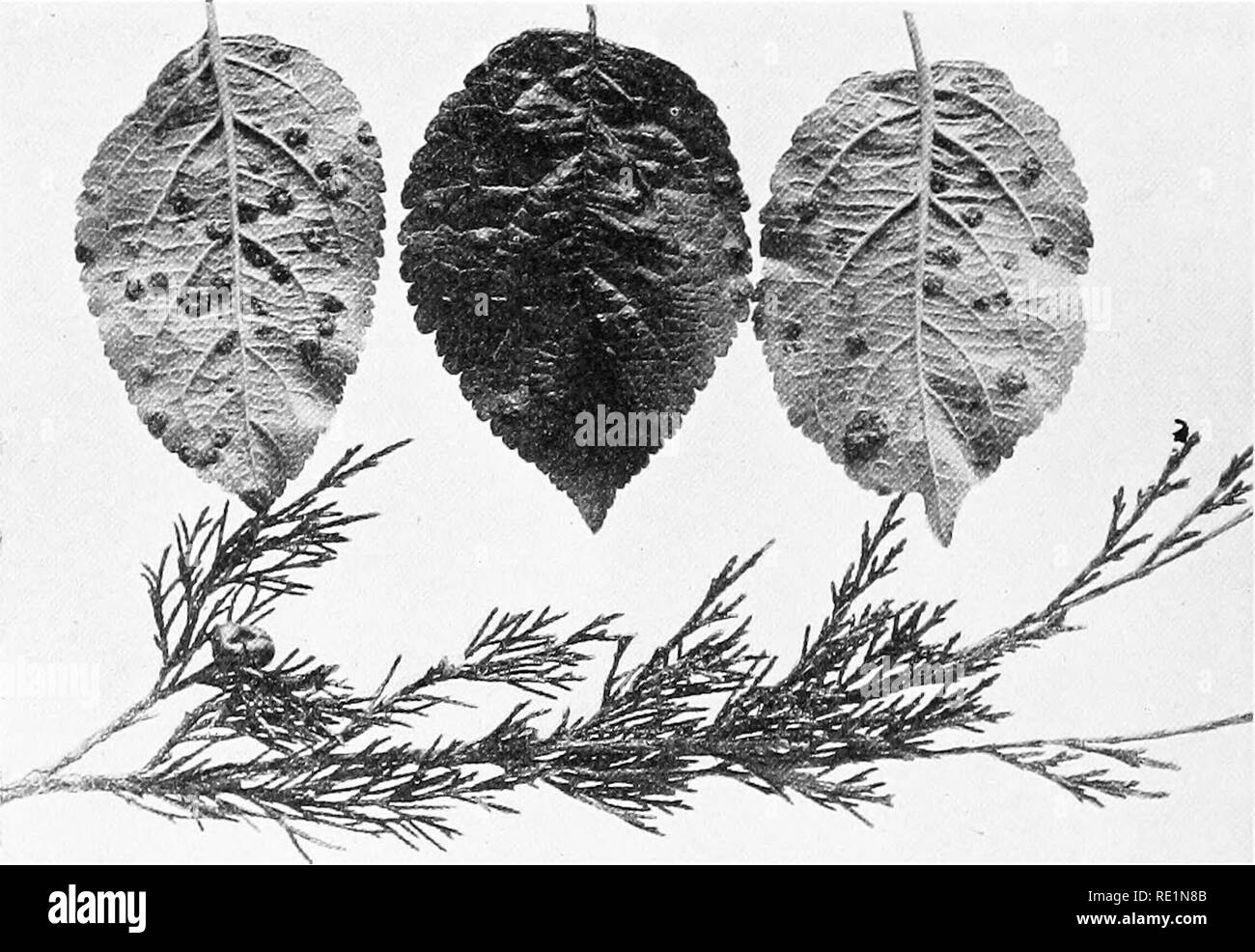. College botany; structure, physiology and economics of plants. Botany. 284 COLLEGE BOTANY Puccinia graminis. The mycelium lives within the host, coming to the surface for the production of two kinds of spores. The urediniospores (or uredospores) or summer spores are borne singiy and are unicellular. They germinate readily and cause new infections. The teliospores (or teleutospores) or winter spores are borne singly and are two-celled. They germinate the. Fig. 134.—Apple rust following spring, producing a promycelium which bears sporidia in groups of four. The sporidia correspond to the spore

Image details
Contributor:
The Book Worm / Alamy Stock PhotoImage ID:
RE1N8BFile size:
7.2 MB (413.4 KB Compressed download)Releases:
Model - no | Property - noDo I need a release?Dimensions:
1904 x 1313 px | 32.2 x 22.2 cm | 12.7 x 8.8 inches | 150dpiMore information:
This image is a public domain image, which means either that copyright has expired in the image or the copyright holder has waived their copyright. Alamy charges you a fee for access to the high resolution copy of the image.
This image could have imperfections as it’s either historical or reportage.
. College botany; structure, physiology and economics of plants. Botany. 284 COLLEGE BOTANY Puccinia graminis. The mycelium lives within the host, coming to the surface for the production of two kinds of spores. The urediniospores (or uredospores) or summer spores are borne singiy and are unicellular. They germinate readily and cause new infections. The teliospores (or teleutospores) or winter spores are borne singly and are two-celled. They germinate the. Fig. 134.—Apple rust following spring, producing a promycelium which bears sporidia in groups of four. The sporidia correspond to the spores in the Autobasidiomycetes. These sporidia germinate and are capable of infecting the barberry and giving rise to the secidium or cluster cup stage. The ajcidiospores are borne in rows in a cup-like growth on the under surface of the leaf. These spores can germinate and infect the wheat. On the upper surface of the barbcri-y leaf we find small flask-shaped organs known as pycni- dia (or spermogonia) and bearing very small pycnospores.. Please note that these images are extracted from scanned page images that may have been digitally enhanced for readability - coloration and appearance of these illustrations may not perfectly resemble the original work.. Cook, Melville Thurston, 1869-1952. Philadelphia and London, J. B. Lippincott Company